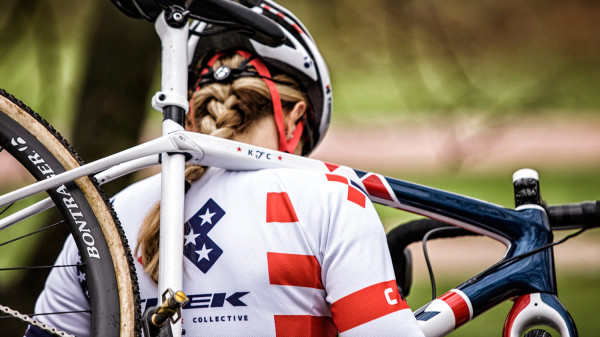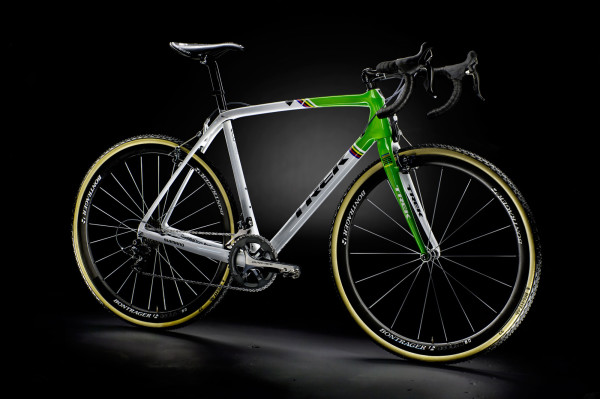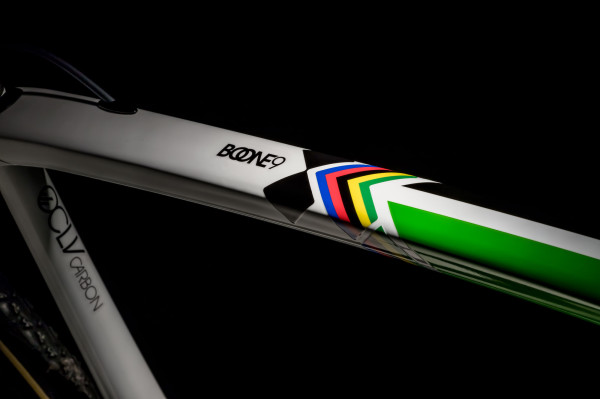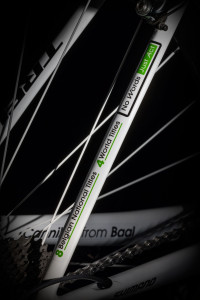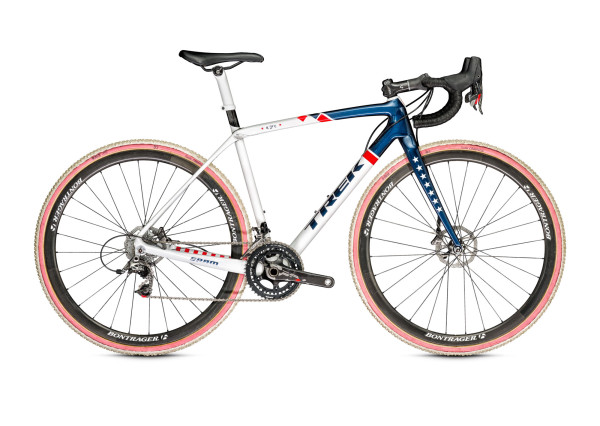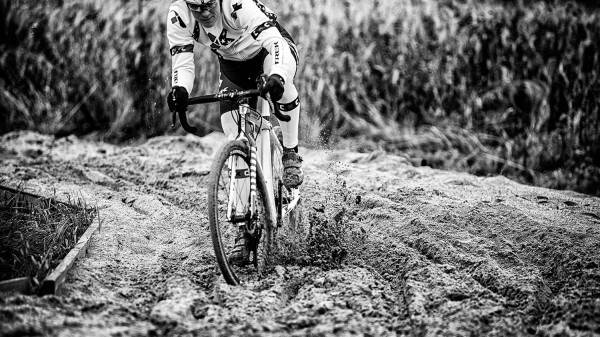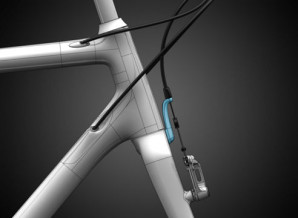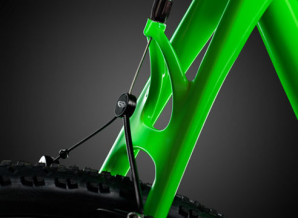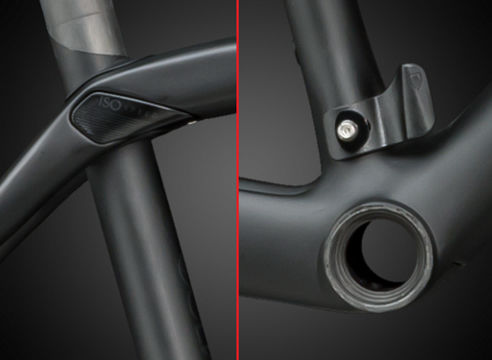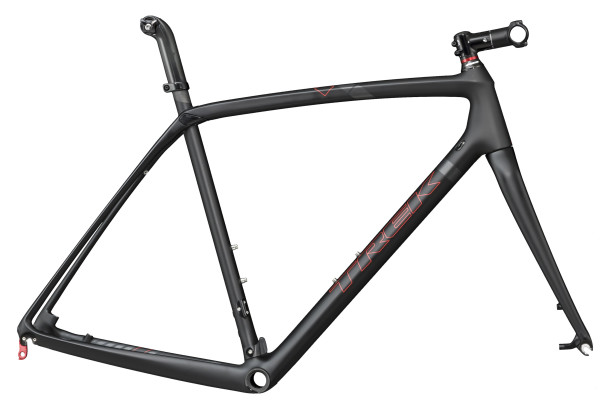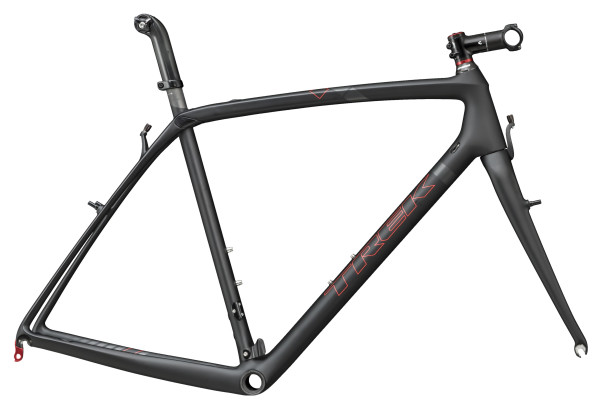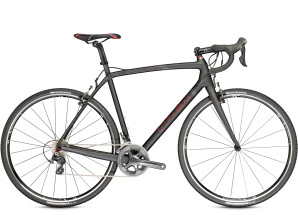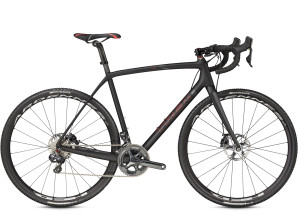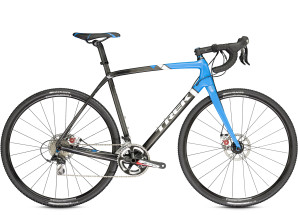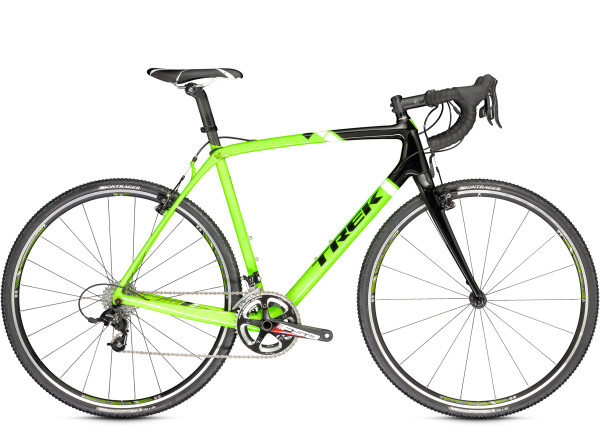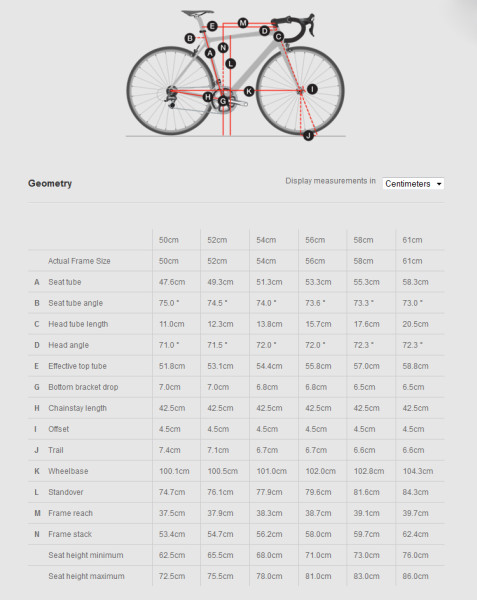You’ve met Crockett, now meet Boone – Trek’s all new carbon cyclocross bike. Confirming months of speculation, Trek’s new bike introduces the IsoSpeed decoupler to the world of cross racing, a move that makes a lot of sense. IsoSpeed is all about smoothing out the bumps, but also about being able to put the power down which should both help when motoring over frozen ruts. Like the Crockett, the Boone was designed in partnership with Katie Compton who helped dial in the geometry. Nearing the bike’s competition it was placed in the hands of Trek’s latest racer Sven Nys, who according to Trek said, “it’s perfect.”
Explore the new Trek Boone after the break.
In addition to the IsoSpeed decoupler, Boone expands their OCLV carbon line of cyclocross bikes. Previously, carbon was only available in the the Cronus CX line which started out as part of the Gary Fisher Collection. The carbon Boones now sit alongside the Cronus CX Ultimate and Cronus CX Pro. While 600 series OCLV carbon keeps the bike light, built in carbon armor keeps it tough.
Since this is a cross bike after all, the Boone features a weather sealed frame to keep mud, sand, and pressure washers out of your IsoSpeed decoupler and cable routing. Designed with routing for mechanical or electronic shifting, the frame is equipped with a new internal battery mount if you choose to go the electronic route. Also, if you choose to stick with cantis over discs, the frame offers cable stops directly over both brakes. The disc brake frames use post mount fittings that can run a 140mm rotor.
For those not familiar with IsoSpeed, it is essentially a bearing system that decouples the seat tube from the top tube/seatstay junction. If you were to remove all of the hardware, the seat tube is not actually connected to the frame at this spot with carbon. Instead, there is an axle that pierces the seat tube and allows the tube to flex absorbing the vibrations and “doubling vertical compliance.” Compared to the Domane, the IsoSpeed decoupler has been pushed back slightly to offer easy shouldering of the frame.
Like most of Trek’s carbon bikes, Boone uses a BB90 bottom bracket and carries over the 3S chain keeper from the Domane. Along with full carbon rear dropouts on all models, the disc brake models include vanishing rear fender mounts so you can keep training, even in the wet.
Like the Crockett, the disc and cantilever frames are platform specific. Meaning no changing your mind on brakes – it’s one or the other. Of course, Boone offers Trek’s seat mast design which builds in compliance, and adjustability in a travel friendly, no-cut design. IsoSpeed isn’t just for the back end of the bike, as the fork has received the bump absorbing treatment as well. Using a rearward curving dropout, Trek claims the fork is better able to absorb road vibrations further smoothing the ride.
Offered in the Boone 5, 7, and 9, only the Boone 7 will not be offered in a disc model. That includes framesets, so you can build up a disc or canti Boone of your choice if you prefer. Pricing starts at $2,299 for the frameset, and ranges from $2,839 for the Boone 5 Canti to $6,299 for the Boone 9 disc.
Boone is offered in 6 sizes, 50, 52, 54, 56, 58, 61cm.
